Panamá is for the Birders!
- Susanne

- Feb 22
- 9 min read
Updated: Apr 7
Panama has a lot to offer, and one of the biggest draws for two birding enthusiasts from Canada was to see beautiful, colourful birds that we cannot find back home. Our stay in el Valle de Anton, or el Valle for short, was a perfect introduction to viewing our feathered friends. From there, we upped our game and joined a birding tour deep in the jungle in the Darien near the southern border of Panama. These were two very different experiences. One was for small “b” birders, and the other was for big “B” Birders. We soon found out that these two types of birding had very different definitions.
El Valle is located in an extinct volcano crater which is the second oldest inhabited crater in the world (South Africa claims first place). The steep hills, hairpin turn roads, and lush jungle offer visitors a variety of views but the best birding we experienced was at the casita (little house) that we rented up on one of the mountain sides. Our host provided directions to the property and met us at the bottom of the driveway. She was very concerned that our rental car would not make it up the drive and wanted to take us the first time so we could judge for ourselves. This very steep drive had a tight, blind corner and an even steeper climb to our accommodations. She told us that because the drive was narrow and only one vehicle could pass at a time, we needed to “manifest” ourselves by repeatedly honking our horn on the way up and down. We decided that the car was capable. Upon our first return to the house, we honked and honked all the way up. Our host sent us a message on Whats App, “I heard you… well done!”
The little house had a wonderful wide sliding door and a balcony with the perfect view of a variety of trees and flowers. All we had to do in the morning was open the door and sit down with a cup of coffee and our cameras. Since papayas were in season, we put out some chunks of fruit on the feeding platform and sat back to enjoy the show. Scarlet shouldered tanagers, clay coloured thrushes, bananaquits, and aracaris all appeared very quickly. Further away in the taller trees, hummingbirds, honey eaters, keel billed toucans and green parakeets made their presence known. We could barely keep up with spotting all kinds of birds and were practically obligated to continue taking photo after photo. Our mantra of “we only need to see one bird” went right out the window as different birds appeared throughout the day. This sums up the definition of small “b” birding.
El Valle has more than just birds on offer and there are a number of hikes and visitor centres available. One day, we decided to climb up to a viewpoint high on the mountain. We soon discovered that our car was incapable of getting up to the trail head and we had to go back down to take a less challenging hike to a waterfall. The trail was pure luxury. It was paved with flat stones the whole way, the suspension bridges were in very good repair, and, after viewing the waterfall, the trail took you to a swimming area. The cicadas were singing their “scissor sharpening” power tool song and the huge trees provided shade. There were also benches, chairs and hammocks provided. This was something we would not see in our part of the world where rustic trails are the norm with very few amenities.
Our stay in el Valle was only a few days but it was the perfect down time before taking the car back to Panama City and joining our next tour. We were picked up at our hotel, along with six other people and began a six hour drive down to the Darien. Our first stop was at a property on the shores of Lake Banyal. The heat and humidity were stifling but we saw some wildlife including a little crocodile, and we had our introduction to big “B” birding. Only four of the eight people in our group had cameras while the others had high powered binoculars. One couple split duties; she took notes about the birds we saw and heard and he took photos when it was possible to spot the birds. Others kept meticulous lists and, then, there was us. Two distracted small “b” birders with cameras who were taking photos of all kinds of things from birds, animals, butterflies and flowers.
By now, you might not think that there is much difference between the two types of birding but, there is. First off, Big “B” Birding involves standing in one spot for a very long time, calling out to a specific type of small bird, that is extremely difficult to spot in the foliage. The heat and humidity are quite exhausting and when the bird is finally spotted, it is so far inside the trees, you might only see movement and not the bird. One expression from our guide that I will not forget is, “To the left of that branch and around the back.” As photographers, this is very disappointing and somewhat frustrating. A second key difference between big and little “b” birding is that chatting amongst yourselves is frowned upon. We would typically stand at the back of the group and quietly discuss things that we were seeing or trying to see or attempting to get to know some of the other people in our group. We were shushed on more than one occasion. The culture shock of big “B” Birding quickly set in.
After a long drive, we finally arrived at the Canopy Camp, a lovely but hard to get to location that we would call home for 5 days. “Camp” is a loose description of the grounds. I would call it “Glamping.” Our huge jungle tent with a private bathroom was nestled in the trees with our very own view of hawks, vultures, hummingbirds and more. The short walk to the common area was through a beautiful garden and included large viewing and dining areas. And here is where serious birding really starts. Breakfast was between 4:15 and 5:00 every morning followed by a significant drive to a particular location. Long hikes and/or a lot of standing on uneven slopes trying to call in tiny songbirds ensued. We soon learned our lesson from the first day and tried not to talk too loudly while the others were searching the trees for their prey. The easier days took us back to camp for lunch and a small rest before the afternoon excursion but the longer days were far more complicated.
Our first very long day included a 4:15 breakfast followed by an hour’s drive, a 30 minute boat ride along a river, and another 1 hour drive to the trail head. This time we did not mind the early start as we were on the search for the magnificent Harpy eagle.
Once the boat arrived at the village and everyone disembarked at the rustic boat launch (an uneven, steep set of wooden stairs), a flurry of activity went on around us. Equipment was brought up from boat, people were organized into 1 of 2 trucks and we were on our way. Funnily enough, our driver, Leon, was 15 years old. Our truck mates were extremely concerned, but he was a very careful driver. Of course, it would have been hard not to be careful. If the road permitted anything higher than second gear, we may have had reason to worry.
Surprisingly, about half way down the very slow, gravel and often flooded road, everything came to a sudden halt. We could not believe our luck…a harpy was in the tree about 30 meters from the road! Two guides immediately set up their spotting scopes and everyone gathered to see this wonderful bird. You may ask what makes this eagle any more spectacular than another. Well, it is one of the largest eagles and it hunts sloths and monkeys. The parents set up their nest near a monkey colony and they care for their young for 2 years or more. They never hunt the animals near the nest. This way, the monkeys get used to having them there and carry out their lives as normal. When the time comes, the parents move away and leave the territory to their young, setting them up for success by having a food source nearby. The harpy eagles also happen to be very beautiful with an amazing crest of feathers on their heads, piercing eyes, and size on their side. They grow between 3 and 3.5 feet tall with females (who are larger than the males) weighing between 13 and 20 pounds. And we were fortunate enough to see one! The harpy sighting came much earlier in the day than we expected but the group proceeded to the trail, as arranged, where we would spend the rest of the day hiking in dense jungle and searching for a variety of other birds including some of our favourites, a pair of spectacled owls.
The boat ride home that day gave us a little extra adventure. About halfway back, a serious rainstorm hit and the boat did not have a cover. The captain called out to the crew, consisting of a teenage girl, and she quickly went into action. A rolled up blue tarp was passed from the front of the boat with each row having to unroll it to cover themselves. We were all hunkering down under this crazy tarp as the rain pelted down in incredible amounts. Then, as fast the rain started, it quit. The tarp was rolled up from back to front and casually stowed back in the hold. I had to admire the quick thinking and ingenuity involved. I call it “trusting the process” and, although things are done differently in other countries, they always seem to work out.
The second day of serious birding occurred the very next day. We followed the same route, but this time, we were going to the end of the road. Leon took us to an indigenous village called Pijibasal. Our guide hired some elders from the village who took a horse to make this trip with us. Why a horse, you may ask? Well, we had 2 rivers to cross that were expected to be quite deep due to the rains and the horse, Gacho, was to ferry each of us across in turn. This day, we were looking for a crested eagle, another large eagle that is not often seen. I must point out that I have never ridden a horse before but Gacho was a gentleman and took care of me as we crossed the rivers.
The heat and humidity set in very early. I armed myself with a thick layer of insect repellent and prepared myself for the journey. We were told it would be about a 5 hour trip but, due to the rain, the jungle trail was very muddy and slippery. The hike up the mountain was more than challenging and took us longer than expected. Thankfully, I had my walking poles with me. They came in handy for helping me get up the steep slopes and avoid more than a few slips. The entire group was soaked with perspiration but we finally made it to the top of the mountain. The indigenous guides spotted the female, who was on a branch a small distance from the nest. She posed beautifully and we were able to get a few photos, most of which were through the spotting scope. She then moved to the nest and called out. The male appeared and he brought her a squirrel to eat. It was an incredible experience and I can’t believe I made the 6 hour trek up and down the mountain and across the rivers. I was covered in mud and sweat but lived to tell the tale. I can now say that I have graduated into big “B” Birding.

Our stay in Panamá lasted just over 3 weeks. During that time, we were able to explore Panamá City, experience driving on some very challenging roads, scuba diving in Chiba National Park, and birding in two very different locations. Although we were taken out of our comfort zones on more than one occasion, we persevered and had a fabulous stay in this amazing country. For those who share our interests, here are are a few recommendations:
Panamá City: Biomuseo, Metropolitan Park, Panamá Canal
Pixvae and Coiba National Park: The Ark Divers offers an excellent stay in cabañas, gourmet food, and a wonderful scuba diving experience with small groups.
El Valle de Anton: for a lovely stay just outside of town, La Chakalaka offers private casitas with wonderful bird watching on site.
Costa Rica Focus: the company that arranged the Harpy Eagle excursion through Canopy Camp. All meals are included and the professional guides will provide a serious birding experience.




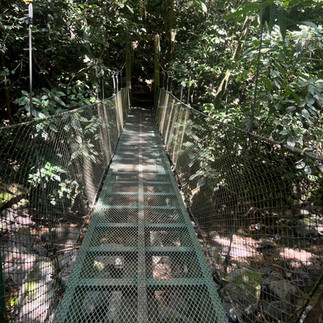



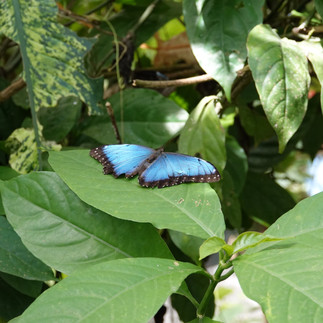

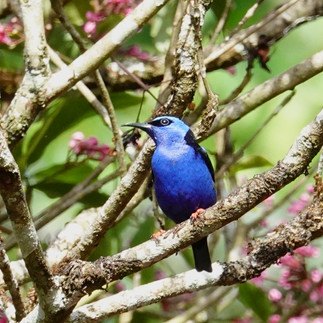







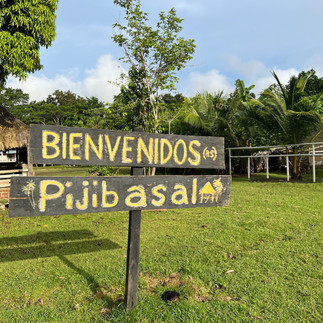



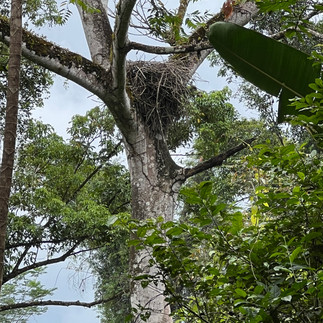



Comments